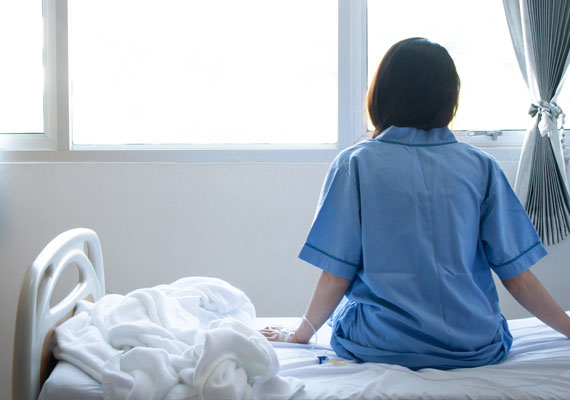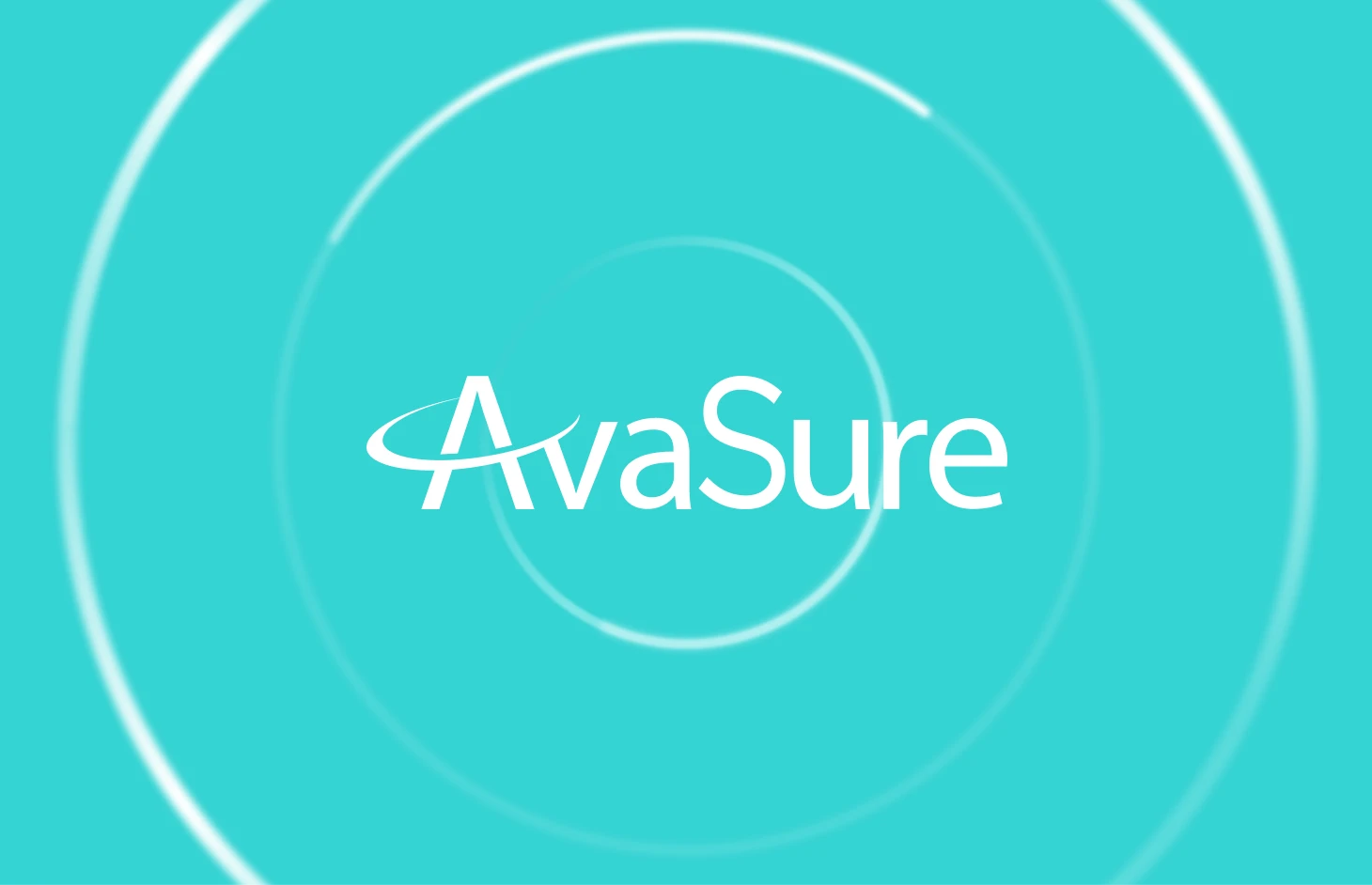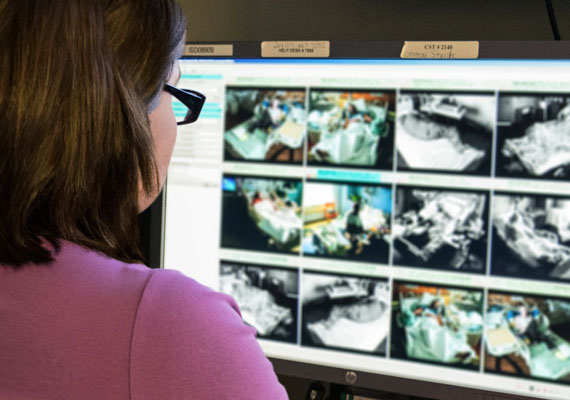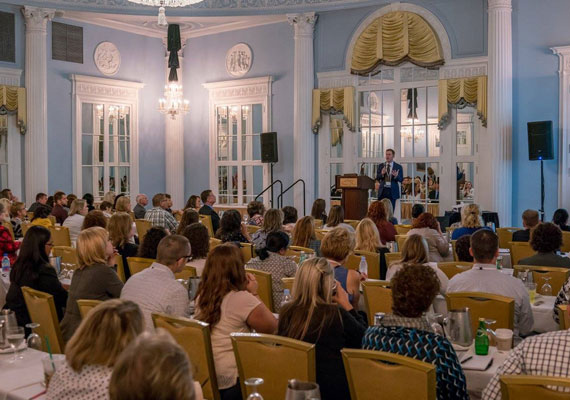
Suicide Risk Patients: Video Monitoring Advantages Become Clear



Many hospitals have taken advantage of AvaSure’s offer of an additional, free monitor station software licenses, which allows healthcare facilities to establish additional localized command centers, empowering clinical bedside staff to view and communicate with COVID-19 patients. With COVID-19 still spreading across parts of the U.S., AvaSure has extended the timeframe for using these licenses until January 31, 2021. If you have not already contacted AvaSure to receive a free license, please notify us.
During this pandemic, many hospitals have deployed the TeleSitter® solution to COVID-19 patients to avoid the spread of the virus and make better use of scarce resources such as masks and gowns. Using the mobile TeleSitter®, which has both high-resolution video and two-way audio to the patient room, allows remote staff to continuously visualize and communicate with patients from the emergency department to isolation rooms to the intensive care unit. Nurses and doctors can remotely interact with the patient to help decrease the frequency of times they must put on and take off personal protective equipment (PPE). Patients suspected of highly contagious diseases are moved quickly from the emergency department to isolation rooms or the ICU. As these patients become spread out in the hospital, monitoring them both centrally from a command center and more locally at the nurses station, frees providers and infection control staff from unnecessary exposure while increasing patient interactions.
Our goal is to help reduce stress on caregivers, patients and families affected by the current situation. We are here to provide a helping hand in these uncertain times.

The latest version of the American Hospital Association Health Research & Educational Trust’s Falls With Injury Change Package introduces video surveillance as a change idea to increase the intensity and frequency of patient observation. HRET recommends video surveillance using a remote monitor tech who can speak with the patient and alert staff directly to intervene with the patient (p. 6 and p. 21).
In a new research study published in the September issue of the Journal of Nursing Care Quality, Lauraine Spano-Szekely, the Chief Nursing Officer of 245-bed Northern Westchester Hospital in Mt. Kisco, N.Y., and colleagues conducted an evidence-based improvement model for fall prevention that included:
Through small tests of change, program evaluation revealed a decreasing fall rate, except in the geriatric cluster of patients with confusion and impulsivity. Seeking evidence of cost effective-safety promotion technology for confused and impulsive patients to replace patient sitters, this research team implemented AvaSys, a patient-engaged video monitoring system. Through it, the team realized a 54% reduction in falls and a 72% reduction in sitter usage.
Their article, “Individualized Fall Prevention Program in an Acute Care Setting: An Evidence-Based Practice Improvement,” presents a population-based approach to fall prevention that also captures the “good catch” – when a fall was actually prevented because staff intervened. Interventions to protect geriatric, confused and impulsive patients from falls ultimately prevent injuries and save lives.
This new work stands in stark contrast to much of our previous experience with call lights, bed alarms, signage and sitter use, none of which moved the needle in any significant way on either falls or falls with injury, a wide array of studies have shown.
Given new information, we all need to stop over-reliance on universal fall precautions and start individualized and population-specific fall prevention programs. This research continues to confirm AvaSys’ effectiveness in patient safety and population-based outcomes.
Author:
Patricia A. Quigley, PhD, ARNP, CRRN, FAAN, FAANP, is a nursing consultant and a nationally recognized expert in fall prevention.

My wife and I used to live near a commuter rail line in suburban Chicago. When we first bought our home, the relative tranquility of our street was interrupted regularly by the thunderous noise and not insignificant shaking caused by the locomotives as trains sped by. I would be awakened repeatedly in the early hours of each day, even weekends, to the point where I wondered if we had made a huge mistake buying a home in that area.
Within a few months, however, what had been a hazard to our health hadn’t just dissipated, it had vanished. The trains still made the same noise, but we had acclimated to it so completely that when friends came over and asked how we dealt with the racket, we would pause for a second to figure out what they were referring to. The only time we noticed the trains was when the engineer would blow the massive horn to alert a car or somebody on foot trying to beat the gates going down at a nearby grade crossing. A few times in our town, which has multiple train crossings, somebody failed to make it over the tracks in time, with fatal result.
This is the experience of the hospital. Patients and visitors, in an unfamiliar environment, are always hyperaware of the din around them, replete with moaning patients, creaking wheels on carts, hallway conversations among staff and, most irritatingly, the incessant beeping of the many alarms on medical equipment, especially IV pumps. The staff are like my wife and I with our locomotive neighbors, completely acclimated to the point where many alarms go unnoticed, or else so irritated by the louder ones that they turn off the alarm function, even on cardiac monitors. It is what is known as alarm fatigue, and it is completely understandable.
The Joint Commission, which has sounded the alarm about alarm fatigue on more than one occasion, found that on one critical care unit, 150 to 400 physiologic monitoring alarms were sounding per patient per day. With 12 patients on the unit, and using the midpoint of the number of alarms, a nurse on a 12-hour shift would hear more than two alarms per minute or 137 an hour.
This is why when I have mentioned the AvaSure Stat Alert alarm to healthcare people who are unfamiliar with our system, they roll their eyes. “Not another alarm no one could miss,” you can almost hear them thinking. Then I say, “Let me tell you, this is one alarm you will respond to,” and I do so with certainty.
One reason is the sound. The AvaSure Stat Alert is loud and quite frankly irritating. It leaves no doubt it is not another IV alarm signaling an empty saline drip. It is designed not to sound like other alarms.
The Stat alert is a validated alarm, meaning a monitor tech has sounded it because of an immediate threat to the health of a patient (or, on occasion, a nurse or tech threatened by a patient or visitor). The alert is activated less than once per shift. On units with the AvaSure TeleSitter device, staff know to start running when they hear it, because they can often avert serious harm if they get to the room in time. The average response time to a Stat alert is 14 seconds. For those who know about alarm response times, that is very, very fast.
AvaSure has another role to play in reducing alarm fatigue. The monitor tech often can see if an alarm going off is because a saline bag is empty or a pulse oximeter has slipped off, giving nurses the opportunity to prioritize their responses. Conversely, monitor techs have seen patients in real distress and have sounded the Stat alert at the same time they call the nursing station to let them know another alarm has gone off for good reason.
AvaSure won’t solve alarm fatigue, but it sure helps in those rooms where it is deployed, and not just when patients are trying to get out of bed when they shouldn’t. The Stat Alert is like that train horn, ensuring that even those who can’t hear the routine alarms anymore know that there is good reason to pay attention.
Todd Sloane has consulted with AvaSure on communications and marketing since 2012.

This marks our third consecutive year that we have honored organizations for achievement in making remote video patient monitoring a vital tool in patient and staff safety, nursing efficiency and cost control.
The honors include the Safety Net Award for the most complete AvaSys program; the Path to Zero Award for the most impressive fall reduction program centered around video monitoring; the Hub and Spoke Award, for the most efficient use of AvaSys by multi-site organizations using a single remote central observation center; and the Video Monitor Staff Superstar Award, which recognizes an individual who consistently goes above and beyond to ensure the safety of patients and staff.

Our final Symposium day started off with wisdom and a beautifully passionate talk by Lee Woodruff. She instilled inspiration in everyone and showed us how far love and hope can go.
Following Lee’s talk, we hung out with local artist Erick Picardo, who throughout the day had a community painting piece where symposium attendees helped to paint sections of the piece which represented our growing community and coming together.
The last round of breakout sessions were fascinating and included topics on behavioral health, video monitoring in acute care and rehab, and how to effectively use video monitoring and create a stable base for successful implementation.
Susan Dentzer, a leading national expert in healthcare and healthcare policy, closed off the symposium with endless knowledge and insights into staffing retention and how to keep up with the many changes throughout the healthcare field.
We are sad to say goodbye to such an amazing group of people who came together to gain knowledge into video monitoring and learn how they can effectively help to enhance patient and staff safety in their organizations. We are excited to be a part of your organization and can’t wait to see you again next year.
If you want to connect with a member of our team to learn more about our product, how to enhance your utilization, or have a question, send us a message at info@avasure.com.

We enjoyed another beautiful day here in Grand Rapids, Michigan and kicked off the 2nd Annual AvaSure Symposium with an amazing talk by John Quiñones followed by the start of our many hot topic breakout sessions.
Discussions throughout the day centered around innovation to patient safety, cutting costs, the Impact of Video Monitoring, suicidal discussion panel, and a monitor staff panel. Each discussion was packed full of new information, informative questions, and a wealth of new knowledge and connections.
Throughout the day, artist Eric Picardo from Experience Live Art combined the feelings of community, networking, and growth, to complete 2 of his original paintings. Day 3 will consist of an interactive piece that all AvaSure Symposium attendees can participate in completing.
We ended on a special note with Ingrid Cheslek, MPA, RN, who discussed employee engagement and retention in a field known for high turnover and burnout.
After hours, we enjoyed a wonderful evening walk of ArtPrize through downtown Grand Rapids and are excited to kickoff our final Symposium day with Lee Woodruff.

On October 3, 2018 we kicked off the 2nd annual AvaSure Symposium in Grand Rapids, Michigan. Our day started with some very insightful focus groups and deep discussions at our round table sessions. We also held our first ever Advanced Monitor Tech Training where attendees spent 3 hours in training learning how to enhance their skills and ensure patient and staff safety across a variety of situations that could potentially arise. Our trainees left with a certificate of their completion of the course, new knowledge, and a growing network of peers.
The big event of the day though was our opening reception held at the Grand Rapids Public Museum. We celebrated our 10 year anniversary with a splendid array of food, beautiful and historical exhibits, carousel rides, and live art with Eric Picardo, we had a wonderful time networking and welcoming everyone to the city.
We kicked off the night by recognizing our customers hard work and how their organizations are advancing patient and staff safety.
Congratulations to our 2018 AvaPrize winners!
Hub & Spoke: University of Maryland Medical Center
Path to Zero: Cincinnati VA Medical Center
Video Monitoring Staff Superstar: Laura Torres, UC San Diego Health
The Safety Net Award: Providence St. Peter
We are excited to continue the fun on Thursday with Keynote speaker John Quiñones & Ingrid Cheslek. Stay up to date on the latest happenings by following us on Twitter over these next few days.

It is possible to increase patient safety and decrease in-person observer costs when using all available cameras, all the time. The AvaSure clinical team recommends the following tips for achieving 100% utilization:
Socialization
Reaching maximum utilization may begin well in advance of the TeleSitter solution go-live date. Building internal awareness among staff and multidisciplinary teams is critical to fostering acceptance of AvaSys. AvaSure can provide “coming soon” posters, an AvaSys awareness video and eLearning modules for your staff. AvaSure’s eLearning modules provide an excellent introduction to the software and the program. Other avenues of building internal awareness include newsletters and introductions in department and staff meetings. Choose clinical champions from each nursing unit who will participate in the development of policy and workflow and assist with education of staff.
Dedicated monitor staff
The staff at the monitor station are an integral part of the patient care team. When choosing team members for the monitor tech position, select individuals who are highly focused on patient safety in their daily work, have a patient care background and are comfortable speaking and engaging with patients. Ensure that each monitor tech has sufficient time in the role to maintain skills and an elevated level of comfort navigating the software and communicating with patients. This will lead to increased level of trust from nursing staff.
Leadership support
During the program planning and development phase, AvaSure’s team of clinical nurses will guide and support you with best practice resources. In addition to the time spent with the AvaSure team, an internal work-group of nursing leaders is encouraged to meet regularly for policy and workflow development. When leadership is engaged in this process, the success of the AvaSys program is made a priority and goals are clearly communicated. After the go live of the AvaSys program, a highly involved team is needed to support the monitor techs in their new role and encourage utilization of cameras by the nursing staff. Consider using nursing supervisors as AvaSys “gatekeepers” to ensure that policy and workflows are followed closely on every shift. The use of sharepoint knowledge base could also help provide a centralized, searchable and secure knowledge management system that would allow staff to become more self-sufficient.
Communication
The staff at the monitor station are considered an integral part of the patient care team. Encourage frequent communication between the nursing staff and monitor techs. RNs who are assigned to patients on AvaSys should call and introduce themselves to the monitor techs at the beginning of each shift and provide an update on each patient. The more information that the RNs provide to the monitor tech, the more the monitor tech can do to help them keep patients safe. The monitor techs are a reliable source of information on patient behavior as they are the only members of the care team with constant visualization of patients.
Culture
Including AvaSys in the culture of safety at your facility is the key to 100% utilization. This can be done by following the above tips and best practice recommendations from AvaSure’s Clinical Program Specialists. AvaSure has a wealth of resources developed after working with successful AvaSys programs around the country. Having a clearly defined policy with inclusion criteria is critical to nurses embracing AvaSys as a nursing intervention. AvaSys should be considered another tool in the patient safety toolbox!
Bonus tip
Special populations. Many of AvaSure’s customers are expanding their programs and achieving success utilizing AvaSys to keep behavioral health patients and those with specific medical conditions safe. If you are interested in expanding your program to include monitoring of patients with suicidal ideation, please reach out to your Clinical Program Specialist for assistance and resources.

As a nurse leader, including 14 years as chief nursing officer of the U.S. Department of Veterans Affairs and its 80,000 nursing staff members, and as someone who cares deeply about improving patient care, I am very much looking forward to this year’s event. Even though I have been an AvaSure board member for several years, I was amazed by last year’s inaugural symposium. The turnout, the enthusiasm of AvaSys users, the intense interest from those who were thinking about adopting this solution, the quality of the keynote speakers, and the depth and breadth of the breakout sessions were extremely impressive. I don’t often say this about conferences, but it was exciting. I take great pride in my VA tenure as the chief nursing officer of the largest integrated healthcare system in America. I am equally proud to be a small part of the AvaSure team.
Equally striking was how much of the talk at last year’s Symposium was NOT about patient falls and sitter costs. Of course, those are usually topics 1 and 1A when people are first looking into remote patient monitoring, but most organizations that have implemented AvaSys quickly see its potential across a wider range of uses. Suicide ideation, neonatal care, emergency department care, elopement, illegal drug use, traumatic brain injury, staff safety – well, the list goes on and on.
This year we’ll hear current innovations on some of the same themes, but I sense the emphasis is expanding. User-driven changes in the software are making this a data-driven enterprise. The ability to record patient safety events in real time is informing changes in protocols. The clinical evidence for monitoring a broader spectrum of patient populations is becoming clearer. And, for the first time in patient care, we will have a record of near-misses – adverse events that didn’t happen because of the constant vigilance of video monitoring. (For more on that see my fellow board member Pat Quigley’s post).
The official theme of this year’s symposium is celebrating the 10-year anniversary of the AvaSys technology. To me, the real theme is that remote monitoring is fast becoming a standard of care, much as telemetry is in cardiac care. Soon, I believe, the question won’t be, “Do you have video monitoring in your hospital?” Instead, it will be: “What is your comparative analysis with other institutions in how you are keeping patients and staff safe through telemonitoring?”
At this year’s symposium you will also be introduced to the new software that is improving “hub and spoke” systems – centralized monitoring stations for observation of patients in many hospitals or even multiple states. Imagine the cost savings of having one operations center for hospitals in multiple states, a center that might also include other forms of patient monitoring.
Just looking at the breakout sessions for this year’s event, I can see how AvaSys is already transforming the ED, often the source of patient self-harm, elopement, and attacks on staff.
And once again, I am so impressed by the nationally known keynote speakers who have agreed to present at the AvaSure Symposium. They will provide insights into national health policy and make the emotional case for making sure patients are safe and secure in hospital care.
So, unless you have something else you simply can’t miss in early October, come to Grand Rapids, MI, and join me and hundreds of your peers in learning more about the newest standard of care.
Cathy Rick, former chief nursing officer of the U.S. Department of Veterans Affairs (2000-2014), is a healthcare consultant and a faculty member for the Executive Fellowship in Innovation Health Leadership program at Arizona State University.